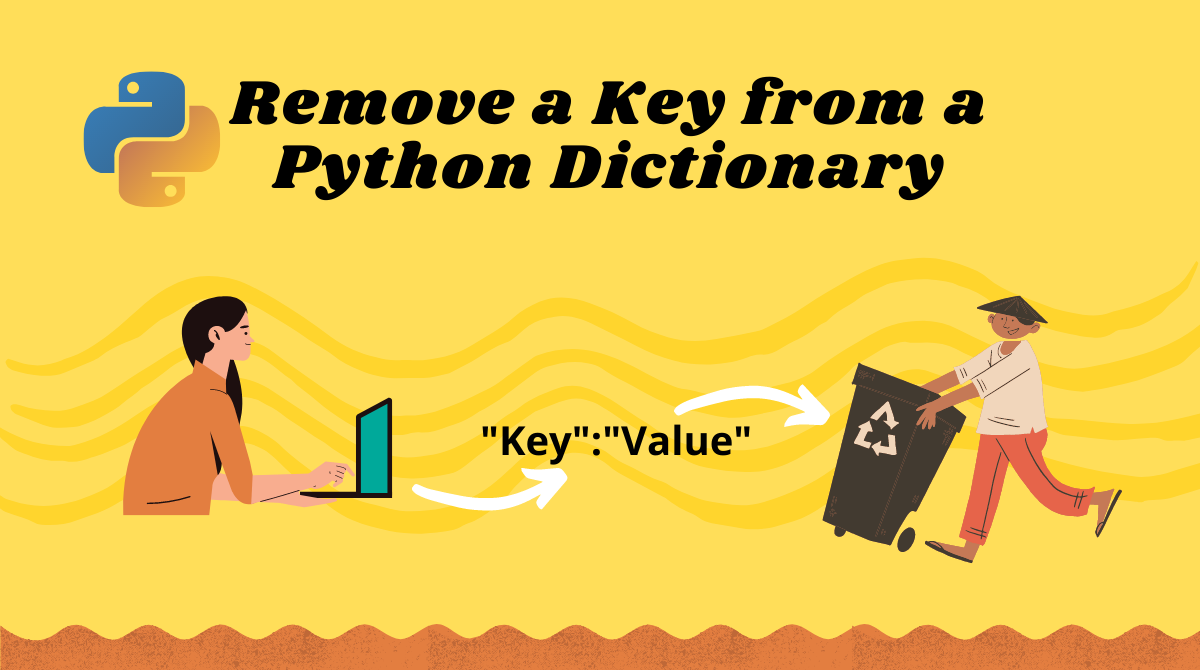A dictionary is a very powerful data collection in Python. Dictionaries help make database operations faster.
You can append items to an existing dictionary and remove them as well.
In this blog post, we will learn how to delete "keys" using two methods:
- Deleting
key:valuepairs usingdel. - Deleting
key:valuepairs usingpop().
What is a Dictionary in Python?
A dictionary is an unordered collection of items. The items are defined using key-value pairs. Keys map to their corresponding item in the list. Whenever an item needs to be queried, we can do this using its key.
For example, "city":"Seoul" is a key value pair where "city" is the key, and "Seoul" is its value.
Here's the syntax for declaring a dictionary in Python:
my_dict = {
<key>: <value>,
<key>: <value>,
.
.
.
<key>: <value>
}In our examples, we will use the below dictionary:
>>> # Declare a dictionary
>>> my_dict = {"Fruit":"Pear", "Vegetable":"Carrot", "Pet":"Cat", "Book":"Moby dick", "Crystal":"Amethyst"}
How to Remove Keys from a Dictionary in Python
Remove a key using del.
You can remove a key using the del keyword. Here's the syntax for that:
del dict["Key"]Let's delete a key in our dictionary my_dict. We'll be deleting the key: "Fruit".
# Delete a key - Fruit
del my_dict["Fruit"]
After we delete that key, we can see that the key Fruit is no longer present in the dictionary.
But, what happens if you try to delete a key that does not exist?
Let's try to delete the key Fruit again.

We received a traceback error. This is valid as the key does not exist.
One drawback of del is that it throws an exception when key is not found. The exception needs to be handled explicitly in a try catch block.
However, we can handle this exception using the second method.
Remove a key using pop()
The second way to remove a key is using the pop() method. Here's its syntax:
data.pop("Key", None)Where,
keyis the key to be removed.Nonespecifies that if the key is found, then delete it. Else, do nothing.- We can also specify a custom message in place of 'None' for cases where key is not found.
Now, if we try to delete Fruit again, there is no exception thrown.

Now, let's try to delete an existing key with pop().

Here, the key:Book is successfully deleted.
One advantage of pop() over del is that it allows us to handle exceptions. It provides a mechanism to return a custom message when exception occurs.
How to set a custom message:
Let's try to delete 'Book' again. We are expecting an error, so let's set a return message.
Here, Key does not exist is the return message in case the key does not exist.
my_dict.pop("Book", 'Key does not exist')
Another advantage is that it also returns the value of the key in addition to performing a delete operation. If you need to know the value of a deleted key, then pop() is the suitable option.

Conclusion
In this tutorial, we learned how to create a dictionary in Python. We also focused on how to delete key:value pairs in a dictionary.
I hope you found this tutorial helpful.
Let's connect on Twitter!
Read my other posts here.
Let's chat on Discord.

